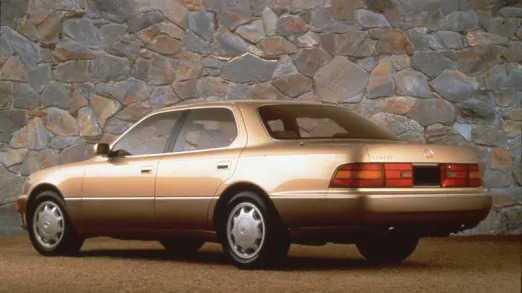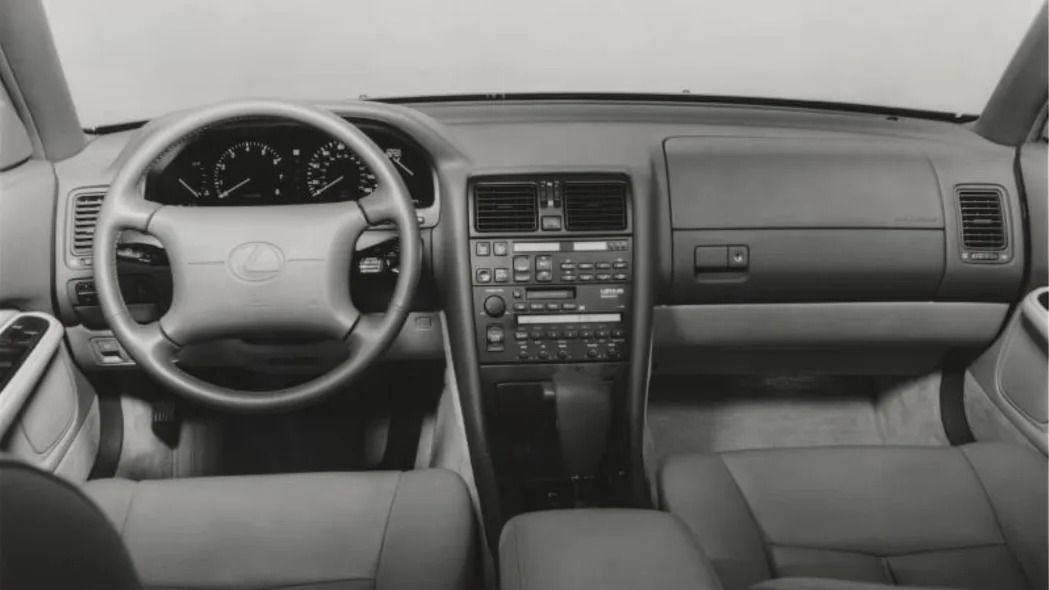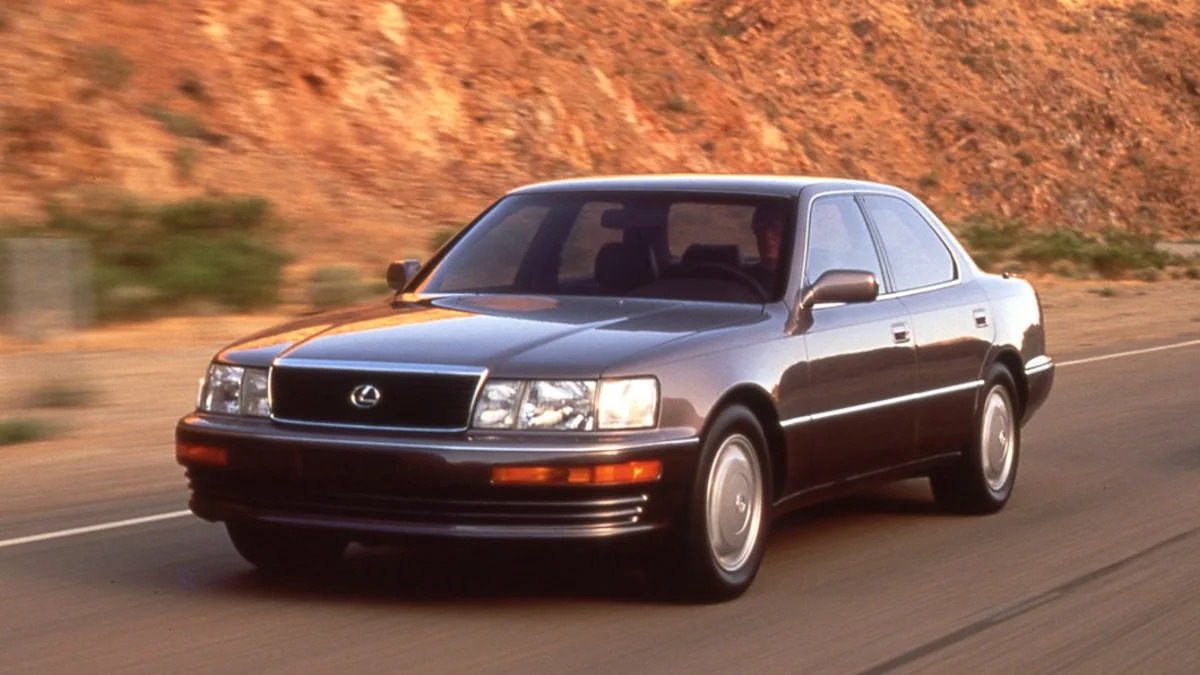The debut of the Lexus LS 400 in 1990 coincided with the first of two seismic shifts in automobile-buying in America that would evolve through the Nineties. The first was Japan’s concentrated effort to conquer the luxury market. The second upheaval was the mass market arrival of the sports utility vehicle.
But before the SUV ran roughshod over the ground that had been established over decades by the venerable sedan, the Asians had one or two — or three — things to say about that: namely, Acura, Infiniti, and most emphatically, Lexus.
Why is the Lexus LS 400 a future classic?
In 2023, both Lexus and the SUV are well established. But let’s back up: more than 30 years ago, the LS 400 was greeted with enthusiasm by consumers, although auto journalists were somewhat more reserved with their praise. Most reviewers were hardly floored by the rather generic design, but all cited the initial base price of about $35,000, which was judged a value and undercut the competition by thousands of dollars.
In fact, in only a year, Lexus outsold both Mercedes-Benz and BMW to become the best-selling luxury import brand in the U.S.


While Lexus took the U.S. automobile industry by surprise, it shouldn’t have. Not long before the LS 400 arrived, Sony was corralling the consumer electronics industry big time; think compact disc, Betamax, the Walkman and the VCR. Remember the laser disc? It set the stage for the DVD. Panasonic had snatched part of the television market. Pioneer and Mitsubishi wanted in on the fun. “Japan Inc.” was going great guns.
These conquests gave Eiji Toyoda, a member of Toyota Motor’s founding family, an idea. He called his concept sedan the Project F1 (F for flagship). His motivation: Beat the Germans. Beat the Americans. Beat everyone. The crystallization of his idea would be the Lexus.
Toyota was pumping a billion 1980s dollars into Project F1. There would be a 4.0-liter V8. It would run as quiet as a … well, as a Mercedes. It would cost $40,000. (Instant American car-buyer outrage: “$40,000 for a Japanese car?”) In the wings waited the all-aluminum Acura NSX two-seater. At $65,000, it was the most expensive Japanese car to that point. The NSX was a stunning example of engineering: aluminum suspension, four-channel Anti-Lock System brakes, 270-horsepower mid-engine V6 with variable valve timing, as in VTEC.
And then there was Nissan. Infiniti launched in 1989 with two cars: the M30, a dated coupe, and the first-generation Q45. Some reviewers compared the interiors to Japanese tapestries, and what didn’t help dispel that notion was an ad campaign that featured rocks and flowers but no car. As one comedian noted, Infiniti sales were little changed, but rocks and trees were selling nicely.
The LS 400 as the brand flagship hit big thanks mainly to three factors: quality, performance and the dealership experience. But there was more to it as well.

What is the ideal example of a Lexus LS 400?
While the technology quotients of today’s high-end cars is beyond what the 33-year old Lexus offered, the LS 400 was among the first luxury sedan to feature an automatic tilt-and-telescoping steering wheel with an airbag and power adjustable shoulder seat belts. The five-passenger cabin included California walnut and leather trim, power-adjustable seats, and soft-touch controls. A backlit electroluminescent gauge cluster featured a holographic visual effect, with indicator lights projected onto the instrument panel.
It was all very Star Treky, and very Japanese. The LS 400 further contained some 300 technological innovations to aid smooth operation and silence, including fluid-damped cabin fixtures and vibration-insulating rubber mounts.
Original, low-mileage examples of the LS 400 are scarce. Most findings will feature commonalities like the reliable 4.0-liter V8 motor, rated at 250 horsepower, which is linked with a 4-speed automatic transmission, and equipment includes traction control and ECT-i electronically controlled shifting. At the low end price-wise — about $6,000 to $8,000 — buyers will still be well-served with a power sunroof, Pioneer stereo and factory 15- or 16-inch alloy wheels.
Our used vehicle listings can be helpful to find a good deal near you. Narrow the offerings down by a radius around your ZIP code, and pay attention to the deal rating on each listing to see how a vehicle compares with others in a similar area.
Are there any good alternatives to the Lexus LS 400?
For those seeking another luxury sedan with Asian roots, the above-referenced Acuras and Infinitis might be a good swap.
Specifically, the Acura Legend Coupe with its silky-smooth 24-valve V6 rates consideration, as does the first-generation Infiniti Q45. And while you may be going down-market a bit, the Honda Accord from this particular time frame could easily be on the alternative menu.
Certainly, the Germans would place high in the mix, since Mercedes, BMW and Audi were in the sights of the Japanese in the Nineties. The Audi A8 should be high on the list, with around 300 horsepower and responsive 5-speed automatic transmissions with rare-for-the-era manual-style shifting. For those looking for something more exotic, there’s BMW’s E30 325i convertible with its terrific straight-six engine.
Related video:


Sign in to post
Please sign in to leave a comment.
Continue